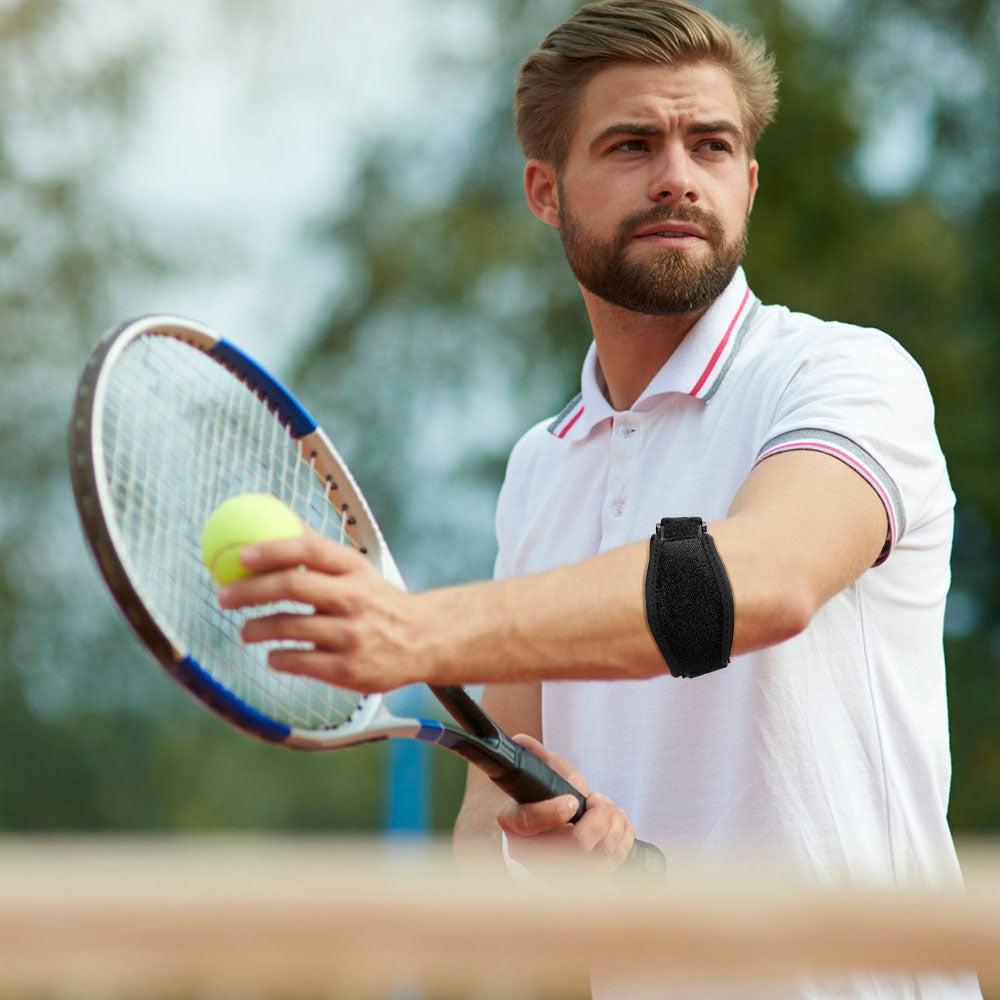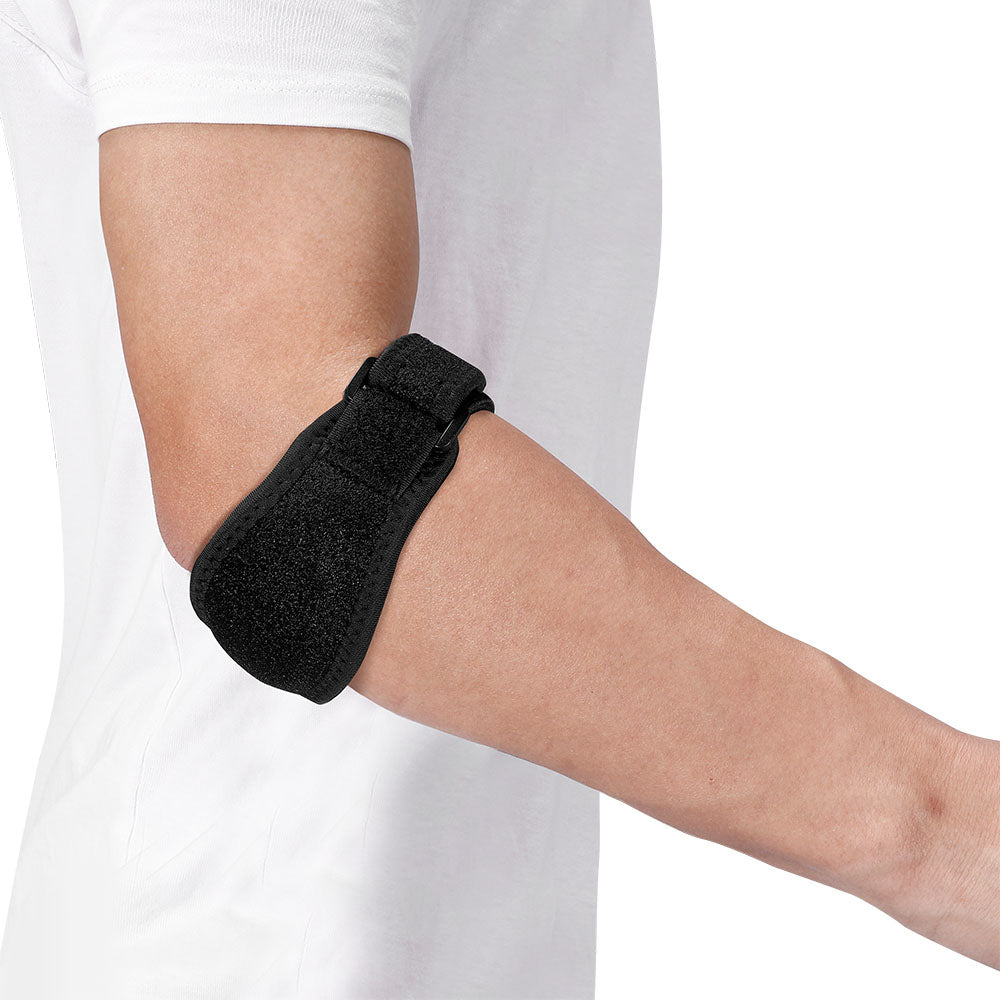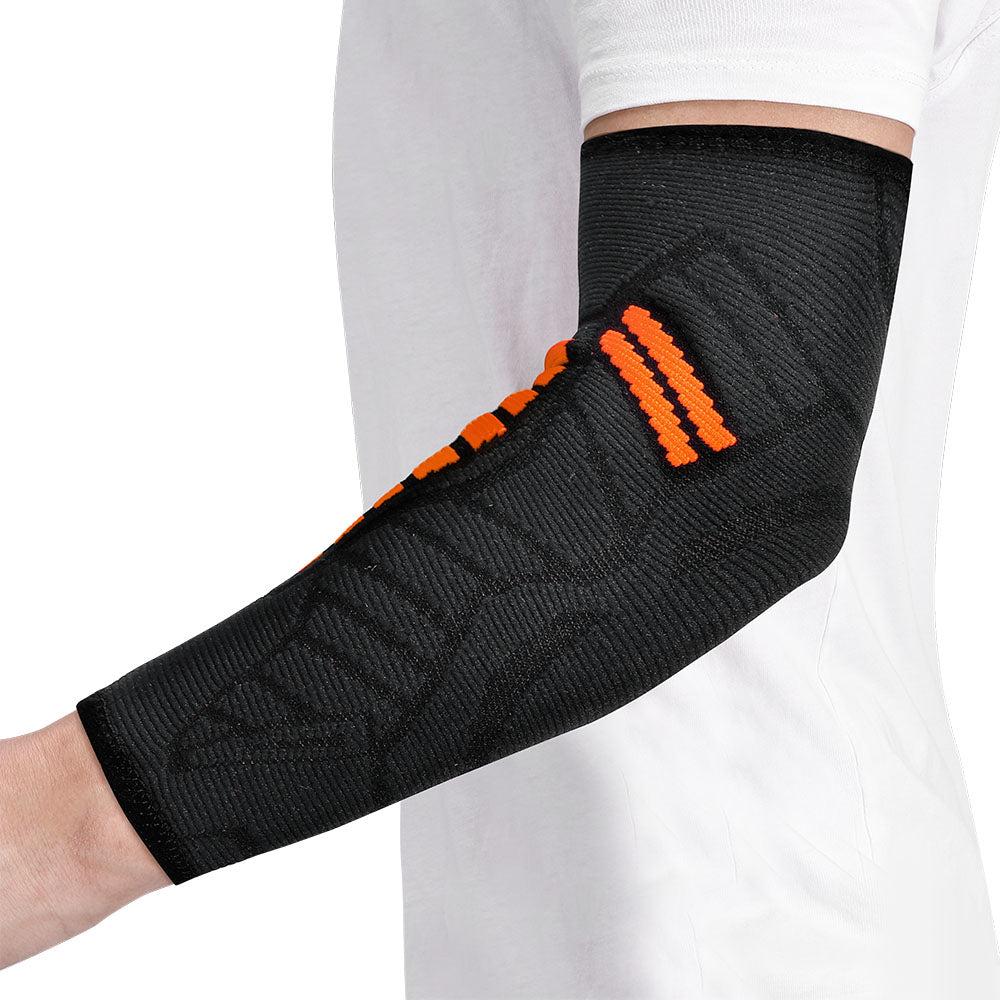Learning
Top 9 Tips on How to Avoid Tennis Elbow

Learn how to avoid tennis elbow by practicing proper technique, using appropriate equipment, and incorporating strengthening and stretching exercises into your routine. This article has everything you need for tennis elbow prevention.
Understanding Tennis Elbow
Before we discuss how to avoid tennis elbow, let’s take a quick look at the tennis elbow symptoms. Tennis elbow isn’t just for tennis players—it’s a common overuse injury that can affect anyone engaging in activities involving repetitive arm movements.
About 1-3% of people in the world have tennis elbow, making it one of the most common causes of elbow pain. There is a high prevalence of this symptom among cooks, office workers, and manual workers, raising our attention to the health of the elbow during work, studies, and sports.
Preventing Tennis Elbow by Marking its Early Stages Signs
- Pain and Tenderness: The most common early sign is pain and tenderness on the outside of the elbow, particularly around the bony knob where the injured tendons connect to the bone.
- Weakened Grip: There may be a noticeable weakening of the grip, making it difficult to hold objects like a racket or pen or when shaking hands.
- Pain During Movement: Pain may intensify when performing activities that involve gripping or twisting motions.
As tennis elbow proceeds, symptoms tend to escalate, making treatment more difficult. Pain intensifies and becomes more persistent, often spreading to the forearm and wrist, especially after activity or at night. The elbow may stiffen, swell visibly, and lead to functional limitations, hindering even daily tasks.
Common Causes of Tennis Elbow
Tennis elbow is often felt through pain of the outer part of the elbow, inflicting inconvenience and disruption on our daily lives and sports training routines. To learn how to avoid tennis elbow, it’s necessary to understand its common causes.
- Repetitive Motions: Repetitive wrist and arm motions can lead to tennis elbow. This includes sports like tennis but also other activities that require gripping or flexing the wrist, such as using a computer mouse, painting, or carpentry work.
- Incorrect Technique in Sports: Playing tennis or other racket sports with poor form can increase the risk of developing a tennis elbow. Similarly, incorrect golf swing techniques can also contribute to the condition.
How To Avoid Tennis Elbow: Top 9 Prevention Approaches
Prevention for tennis elbow is crucial to maintaining arm health and overall well-being while pursuing an active lifestyle. By taking proactive measures to avoid this condition, individuals can safeguard themselves against debilitating pain, stiffness, and limitations. So, what are the measures to follow?
1. Proper Technique
Start preventing tennis elbow by learning the correct playing techniques.
Techniques for Tennis Players:
- Use a proper grip on the tennis racket, such as the continental or eastern grip, to minimize strain on the forearm muscles.
- Maintain proper form during strokes, ensuring that your wrist remains stable and does not excessively flex or extend during ball contact.
- Avoid excessive wrist flicking or snapping motions during serves and groundstrokes.
2. Equipment Adjustment
Using the right equipment, tailored to your body and skill level, can help reduce strain on the elbow. For instance, using a tennis racket with the appropriate grip size and string tension can help distribute force more evenly across the arm, minimizing the risk of overuse injuries.
For office workers, an adjustable chair, keyboard, and monitor are essential to ensure the workstation is ergonomically designed to allow neutral elbow movement.
3. Gradual Progression
Monitor your muscles and tendon condition and add up the strength of your training gradually. Start with light or moderate levels of activity and gradually increase the intensity or duration as your strength and endurance improve.
4. Warm-Up and Stretching
A thorough warm-up stretch can activate the muscle with better flexibility and reduce the risk of injury. You may consider integrating these exercises into your warm-up routine:
- Wrist Extensor and Flexor Stretch: stand with your arms extended and hold your palm down. Use the other hand to bring the palm backwards until you feel a stretch in the forearm muscles. Hold for around 20 seconds, and then switch to holding your palm up. Repeat the same process.
- Forearm twisting: hold your arm out straight, turn your hand to face up, and then turn it down.
- Wrist Circles: Make gentle circular motions with your wrists in both clockwise and counterclockwise directions. This helps improve wrist mobility and flexibility.
5. Strength and Conditioning
A well-rounded strength-enhancing program that targets the forearm and wrist can help prevent developing tennis elbow over time.
- Wrist Curls and Reverse Wrist Curls: You should hold a light dumbbell or resistance band. Slowly curl your wrist upward, then lower it back down. For reverse wrist curls, repeat the aforementioned procedures with your palm facing down.
- Grip Strengthening: You may need a grip strengthener or a stress ball. Just squeeze the tool as far as you can for a few seconds and then release and repeat.
- Dead Hangs: Hang yourself with your hands holding onto a sturdy overhead bar and your arms fully extended. Hold for 1 minute and then rest and repeat.
6. Rest and Recovery
Listening to your body and taking time to rest is essential. If you have a feeling of heaviness or fatigue in your wrist muscles, it’s time to stop and rest. Overtraining can lead to injury. So, ensure you give your body the rest it needs to recover.
7. Proper Nutrition and Hydration
Nutrients like vitamins C and D, calcium are essential for bone health, which indirectly affects the health of the elbow joint. Hydration is crucial for maintaining the lubrication and cushioning of joints, including the elbow, through the production of synovial fluid.
Overall, diet and hydration are vital for muscle recovery and overall health, which can help prevent injuries like tennis elbow.
8. Use of Supportive Devices
Using supportive devices can help avoid tennis elbow by reducing strain on the tendons and muscles of the forearm during activities.
Supportive devices such as braces, straps, or sleeves can provide compression and stability to the elbow joint, helping to distribute forces more evenly in those repetitive, forceful actions.
When choosing supportive devices, look for ones that provide comfortable compression and targeted support for your specific activities.
9. Seeking Professional Guidance
If you’re unsure about your technique or have concerns about your risk of injury, consult with a physiotherapist or trainer for personalized advice.
Best Elbow Braces for Tennis Elbow Prevention
Are you an avid sports enthusiast looking to up your game without the pain of tennis elbow? Look no further than the meticulously designed tennis elbow brace from Fivali.
Fivali Elbow Band for Tennis Elbow (2 pack)
The elbow band features a minimalist design for applying pressure to the affected area at the early stage. It provides adequate support without being overly restrictive or distractive. The thickened EVA padding allows for superior shock absorption and adjustable non-slip straps for a customized fit. It is designed for active wear during sports.
- Price: $22.99
- Features:
- Thickened EVA padding for superior shock absorption
- Non-slip straps for a secure fit
- Adjustable tightness for a customized fit
- Suitable for activewear
Fivali Elbow Brace for Tennis Elbow (2 pack)
Providing extensive support and stabilization over the entire elbow joint, this Fivali elbow brace stands as a perfect choice for people looking to prevent tennis elbow from deteriorating. Featuring high-elasticity fabric and an anti-slip silicone strip design, it offers adequate support without hindering movement. Available in various colors and sizes for a snug fit.
- Price: $22.99
- Features:
- High-elasticity fabric that provides a snug fit without hindering movement
- Anti-slip silicone strip design to prevent the brace from shifting
- Allows for a full range of motion while offering proper support
Conclusion
Preventing tennis elbow is about a holistic approach to your health and activity. By focusing on proper technique, equipment, gradual progression, and rest, you can significantly reduce your risk.
FIVALI’s elbow braces provide the support you need to prevent elbow pain and injury without compromising on performance or comfort, making them an excellent choice for anyone looking to prevent or manage tennis elbow. Visit Fivali for more options on elbow braces to help you avoid the too-often yet undesirable elbow issue.
SEE ALSO: Floryvulyura 24H: Bringing Convenience And Elegance Together
































